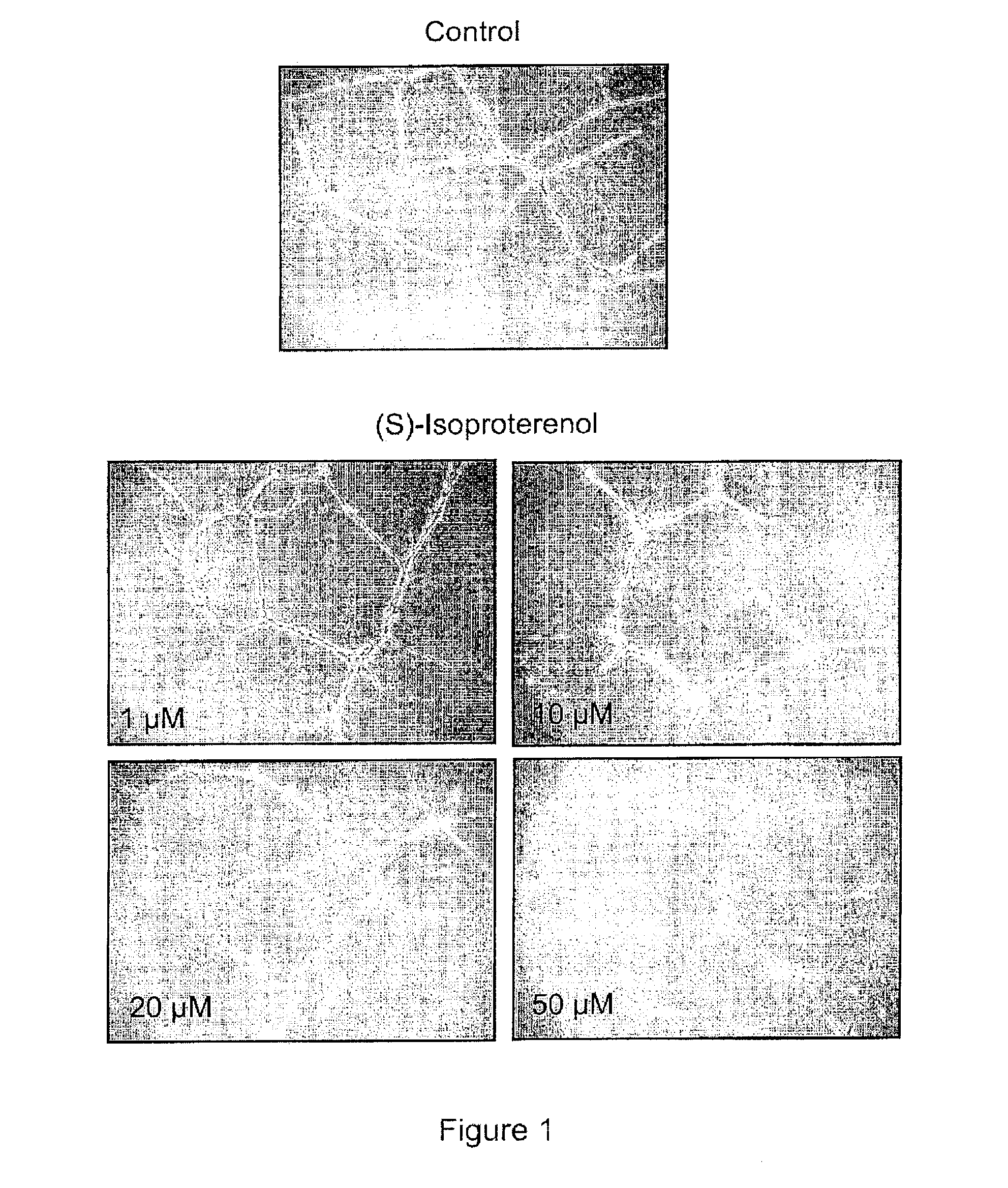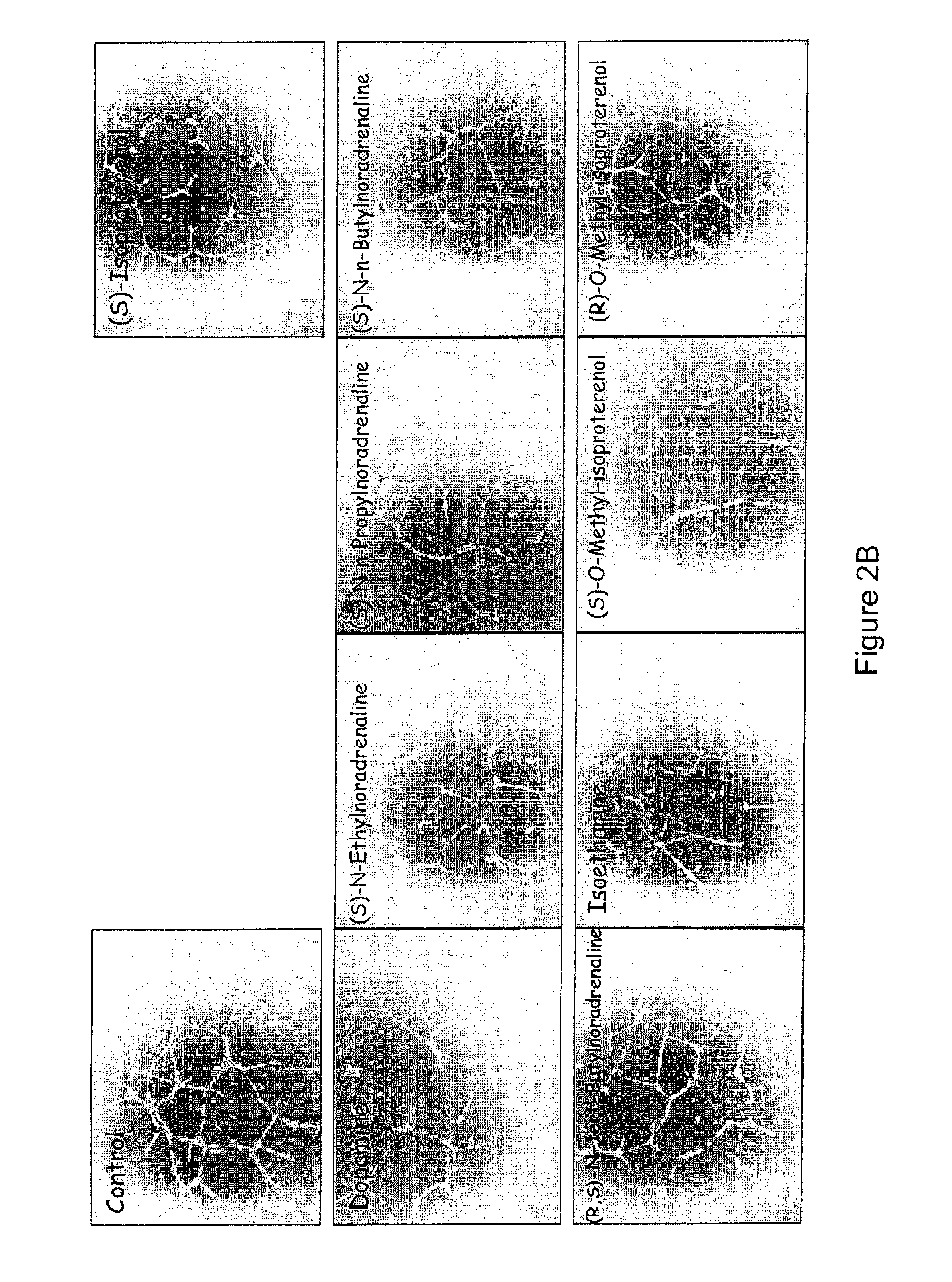Use of catecholamines and related compounds as Anti-angiogenic agents
- Summary
- Abstract
- Description
- Claims
- Application Information
AI Technical Summary
Benefits of technology
Problems solved by technology
Method used
Image
Examples
Embodiment Construction
[0041]Materials And Methods:
[0042]Chemicals: (S)-isoproterenol L-bitartrate, (S)-noradrenaline L-bitartrate, D-mannitol, benzalkonium chloride, pivaloyl chloride (trimethylacetyl chloride), iodoethane, 1-iodopropane, 1-iodobutane, sodium borohydride, methyl trifluoromethanesulfonate, 2-chloro-3,4-dihydroxyacetophenone, 1,4-dioxane, p-toluoyl chloride, disodium sulfate, chlorobutanol, aminocaproic acid, sodium perchlorate, [Glu1]-fibrinopeptide B, (R)-isoproterenol hydrochloride, isoetharine mesylate, di-tert-butyl dicarbonate, triethylamine, acetyl chloride, 2-propanol, dimethylformamide, tert-butylamine, isobutyryl chloride, benzoyl chloride, cetylpyridinium chloride and povidone (K30) were obtained from Sigma-Aldrich (Oakville, Ontario, Canada). Acetone, methylene chloride, ethyl acetate, glacial acetic acid, disodium carbonate, sodium chloride and NaOH were from EMD Science (Gibbstown, N.J., USA). Disodium edetate, trifluoroacetic acid (TFA), and water were purchased from J. T. B...
PUM
| Property | Measurement | Unit |
|---|---|---|
| Fraction | aaaaa | aaaaa |
| Fraction | aaaaa | aaaaa |
| Fraction | aaaaa | aaaaa |
Abstract
Description
Claims
Application Information
 Login to View More
Login to View More - R&D
- Intellectual Property
- Life Sciences
- Materials
- Tech Scout
- Unparalleled Data Quality
- Higher Quality Content
- 60% Fewer Hallucinations
Browse by: Latest US Patents, China's latest patents, Technical Efficacy Thesaurus, Application Domain, Technology Topic, Popular Technical Reports.
© 2025 PatSnap. All rights reserved.Legal|Privacy policy|Modern Slavery Act Transparency Statement|Sitemap|About US| Contact US: help@patsnap.com



